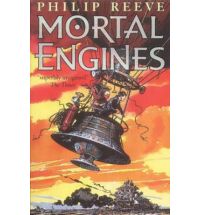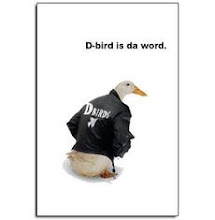Have you got any steampunk novels in your school library?
You probably have The Golden Compass/Northern Lights by Philip Pullman, and its sequels in the His Dark Materials series,
and Mortal Engines and its sequels by Philip Reeve;
Maybe also his Larklight series (thanks for the reminder, Jessica!)
and have Ichabod Crane and the Lighthouse Mystery may have made its way into your collection (by Australian author James Roy - thanks for the heads-up, Victor).
Enthusiasm for other Scott Westerfeld books (eg. Uglies and its sequels, Peeps) may have encouraged you to invest in Leviathan (Behemoth is out later this year). Nice steampunk style book trailer for Leviathan on Westerfeld's site, too.
So what is involved in the steampunk genre? Read Jeff VanDerMeer's article/overview here (click on each slide to read its informative caption) - here's an extract from Slide 1:
First, it’s both retro- and forward-looking in nature. Second, it evokes a sense of adventure and of discovery. Third, it embraces divergent and extinct technologies as a way of talking about the future.
Over the past decade, Steampunk has gone from being a literary movement to a way of life, a part of pop culture, and a mechanism to look at the idea of “progress.” Steampunk has gained strength and momentum as it has transitioned from a “movement” to an “aesthetic.” A Steampunk aesthetic now permeates movies, comics, fashion, art, and role-playing games, as well as events such Maker Faire and the Burning Man festival. Media coverage from juggernauts such as the New York Times and MTV has fostered its spread through the zeitgeist.
Steampunk draws people from all political persuasions and social classes, but the best of Steampunk in my opinion is unabashedly progressive, proactive, and deliberately pushes against a cynical and jaded world with a brand of cautious optimism. Steampunk also serves as a potent entry point for people to reclaim technology and to talk about a sustainable way of life. Both the Maker movement and the Green movement have become part of the Steampunk subculture.
An exploration of Steampunk begins more than a century before the term was first coined in 1987.
and find more info and a bunch of links from author Gail Carriger here.
The steampunk aesthetic reaches widely. Try googling to find images of steampunk (wooden/brass) laptops, and on http://www.etsy.com/ the tag 'steampunk' will yield a whole bunch of handmade items in this style (some gorgeous, quirky jewellery for example).
Cheers
Ruth
ADDED LATER
PS. I've added to this blog entry since writing it, prompted by some very helpful folk. Also, read the comments to find out more. And I must be PsyChic, this very day, after this blog entry had been written and published, the Book Depository newsletter came with a feature on steampunk. It focused a bit more on steampunk fiction for adults, but here's the link if you'd like it.
ADDED LATER
PS. I've added to this blog entry since writing it, prompted by some very helpful folk. Also, read the comments to find out more. And I must be PsyChic, this very day, after this blog entry had been written and published, the Book Depository newsletter came with a feature on steampunk. It focused a bit more on steampunk fiction for adults, but here's the link if you'd like it.



























2 comments:
Why yes we do have steampunk! I'm a big fan and have discussed this here...http://bshslibrary.edublogs.org/tag/steampunk/
Nice one, Ruth!
Steampunk style is awesome! Although having mentioned Philip Reeve, his "Larklight" series is even more steampunk than "Mortal Engines"... and a great deal cheerier! Hasn't gotten much love in our library though; I think it's the old-fashioned writing style.
Post a Comment